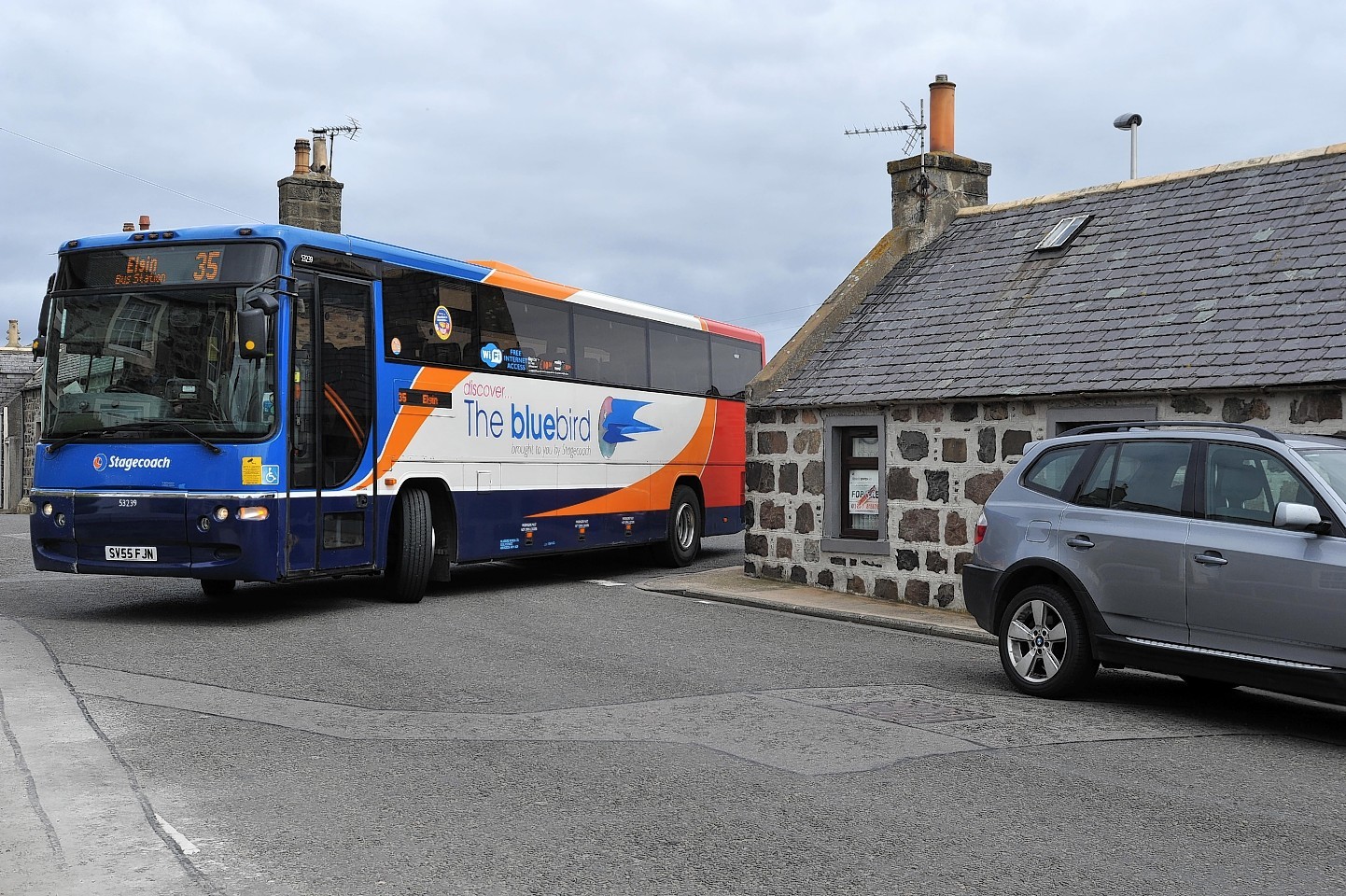Council bosses have been blocked from tearing down a centuries-old north-east cottage which has been blamed for a series of bus crashes.
Transport giant Stagecoach was left with a £13,000 repair bill after its coaches twice bashed into buildings while trying to negotiate a sharp bend at the corner of Seafield Street and Loch Street in Whitehills.
Aberdeenshire Council agreed that the junction was “substandard” and applied for conservation area consent to have the problem cottage, which is unoccupied, demolished.
Now the move has been blocked by Historic Scotland which argued there was no good reason for having the building bulldozed.
In its letter to local authority officers rejecting the plan, a spokesman for the heritage organisation said: “The property at number 27 Seafield Street makes a positive contribution to the character and appearance of the Whitehills conservation area.
“There is inadequate justification for its complete demolition.”
Last night, a spokeswoman for Stagecoach declined to comment.
The local authority recently held talks with Historic Scotland in an attempt to reach a compromise.
But following the meeting, the council said it still maintained that the best option was to get rid of the cottage.
In a letter to planners, local roads manager Alan Burns said that alternative proposals, including the installation of traffic lights at the junction, might help traffic but would not address concerns about pedestrian safety.
“It is felt that the installation of traffic lights… would have a greater detrimental effect on the centre of the village,” he said. Mr Burns added that another suggestion to demolish another house at the junction would not help.
“This service is still of a mind to proceed with our proposals to demolish number 27 Seafield Street and would ask that Historic Scotland look again at the site and support our application.”
In a letter to the local authority, Stagecoach operations manager for Moray, Sandy Gallacher, said: “We have had a number of accidents which have caused property, building and vehicle damage totalling £13,000. We also carried out a risk assessment of the junction and it was a concern when two large vehicles met, as this placed drivers in a difficult situation as it involved one or the other making a dangerous manoeuvre.”
